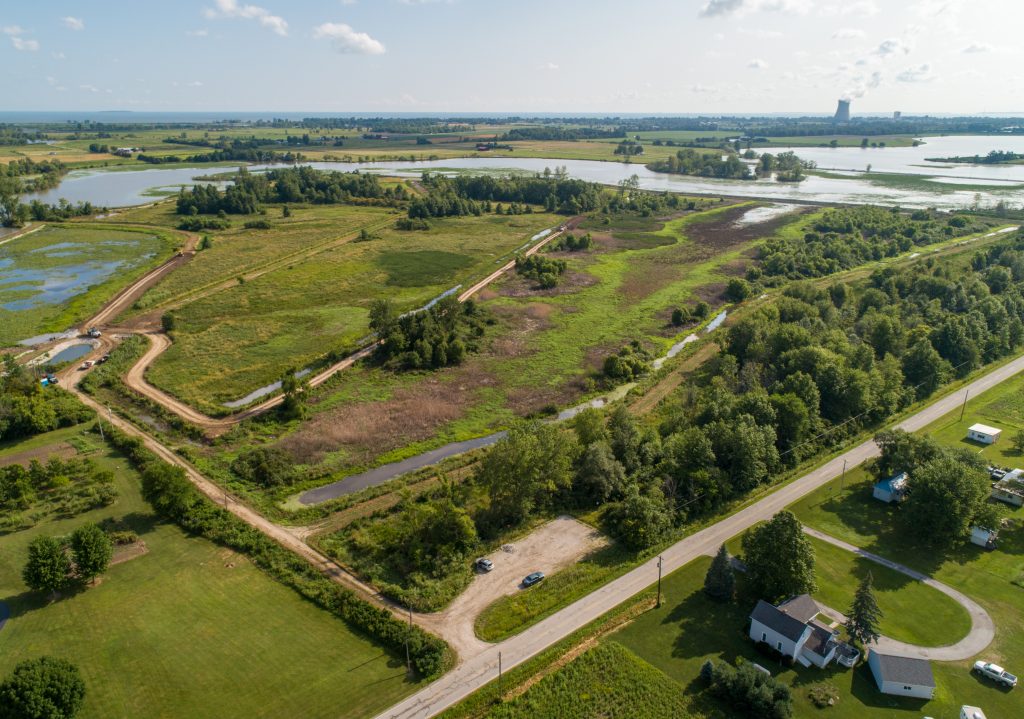Project Location
The project is located near the town of Oak Harbor, roughly five miles from Lake Erie. The site is adjacent to the Toussaint River and includes 125 acres of emergent and lowland shrub wetlands within western Lake Erie’s coastal zone at the Toussaint Wildlife Area.
Project Benefits
Habitat in this area of Ohio was historically dominated by emergent and forested wetlands. Human activities dramatically altered this landscape, resulting in the loss of more than 90% of the historic wetlands. The restoration and redesign of an existing impounded wetland is needed to help:
• Improve the quality of habitat for fish and wildlife in the coastal region of Lake Erie.
• Restore hydrological connections between the wetlands and the Toussaint River for fish passage.
Project Objectives
• Enhance water level management capacity while reducing costs associated with infrastructure maintenance and operation.
• Restore the connection between the wetlands and the Toussaint River to address BUI 14a, Loss of Wildlife Habitat, in the Maumee Area of Concern.
• Improve the connectivity of wetland habitat for fish and wildlife and improve water management capability for the control of invasive plant species.
Management Practices
• To realize a better water level management system, existing water control and pump structures were removed and replaced with improved infrastructure.
• To increase habitat connectivity for fish and wildlife and decrease management costs, more than one-mile of the internal levees were removed to establish one large wetland where four smaller wetlands had previously existed.



Project Links
• Project Rack Card: Toussaint Wildlife Area
• Data Management and Delisting System Entries: Phase I, Phase II, Phase III
Project Partners
This project was a collaborative effort among the Ohio Division of Wildlife, The Nature Conservancy and Ducks Unlimited, with financial support provided by the National Oceanic and Atmospheric Administration, the Great Lakes Fish and Wildlife Restoration Act and the National Fish and Wildlife Foundation through the Great Lakes Restoration Initiative.
Photo credits:
All page photos: NOAA



